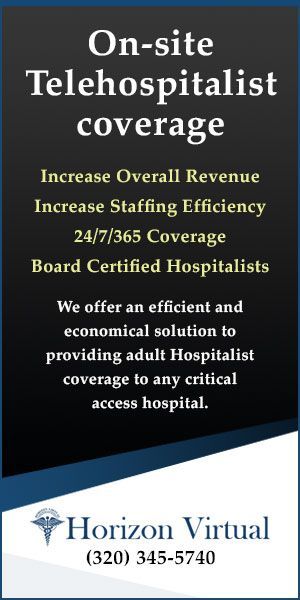he human psyche is remarkably adept at normalizing. While this confers an exceptional capacity for resilience, this plasticity frequently allows for the disallowable. Physicians are not immune to this. Health care leadership in the United States has undergone a disturbing transformation in the past 15+ years, as it has changed from a small scale, local and regional model led by physicians, to a system increasingly dominated by multi-state, national and multi-national corporations. What once seemed like a necessary trading of autonomy in pursuit of a lighter administrative burden, more resources and more time with patients has led to a disorienting shift in priorities, as the foundation of patient-centered, physician-led care moves under the influence of a customer-based lean and profitable large-scale business model. As the transformation began to bear fruit and physicians’ influence continued to wane, the dysfunction became more apparent, and many physicians discovered they were now just another employee. The challenges of staffing, resource limitation and physician shortages mounted, driven by factors increasingly out of their control. Excessive documentation requirements, unpaid clerical work and the obsession with payer-driven clinical metrics began to feel endemic. At first glance, many physicians seemed to be adapting to the dysfunction. However, when one examines the personal mental, physical and emotional cost that physicians have endured, manifested by epidemic rates of physician depression and suicide, burnout and moral injury that are driving the ever shortening career-life expectancy of physicians, it has become clear that resilience and adaptation to a new health care climate is not a solution, and the disturbing forecast of physician shortages has become untenable.
cover story one
Health Care at the Crossroads
Securing the future of patient care
By Lisa Schweiger, MD, and Nick Venosdel, MD
Beginning of the End?
At the start of this corporate takeover, both physicians and the communities they serve were offered great promises of a symbiotic relationship abundant with resources, guaranteed financial stability, more time with patients and the removal of the burdens of running a business. In a frighteningly short period of time, however, working physicians were quickly ousted from the forefront of medical decision-making at both the systemic and clinical level, increasingly replaced by MBA graduates and a small group of administrative-minded physicians who provided care for only a handful of patients, or none at all. Many physicians entered administration with all the best intentions, seeing it as an opportunity for personal development, a chance to positively influence medicine at a systemic level, or as the answer to scale back on the overwhelming burden of full-time patient-care while still providing a valuable service to patients. The corporate structure has been a rude awakening for many of them, often finding that their primary job description is no longer to provide patient-centered care, but to toe the corporate line. Then there are the select few who have ushered in the business-driven corporate model with open arms. These are the ones who dictate what lines must be toed. In retrospect, it is fair to say that physicians shoulder some of the blame for the erosion of the health care system in the U.S., failed to blow the whistle, did not fight hard enough, or in many cases, openly welcomed corporatization. Truthfully, however, many of us simply did not see it coming. We have kept our heads down, focusing on the patients in front of us, as we have sworn to do, and have continued to push through the day-to-day problems intrinsic to a career in medicine, as we were trained, all within a mindset of independence.
Medical decision-making frequently flirts with or flat out contradicts the oaths we have taken.
While the motivation behind a for-profit entity is readily transparent, the shift in motivations and increasingly for-profit behavior of nonprofit health care systems is more difficult to analyze. Considering the growing number of partnerships with for-profit health care conglomerates such as UnitedHealth and Quest Diagnostics or investment groups like Blackstone, paired with the public financial records inherent to tax-exempt status, nonprofit companies that benefit massively from public funding are running out of places to hide. This, along with the competitive nature exhibited by most health care systems, and the now thread-bare excuse of the COVID-19 pandemic, has led many nonprofits to shed the fleece and practice overtly aggressive for-profit behavior with a paper trail a mile long.
Hospital Closures
In recent years, there has been a disturbing trend of hospital department and service line closures, in both rural and major metropolitan areas across the country. This trend has been marked frequently in the Midwest by the shutdown of mother/baby units, inpatient mental health facilities, psychiatric residential facilities, inpatient pediatric programs and, in some cases, entire hospitals. For instance, Allina Health, one of Minnesota’s largest nonprofit health care organizations, recently shuttered three predominantly rural mother/baby units within a year’s time, citing low volumes and staffing concerns, yet offering little to no resources to stave off the closures. Physicians and communities were left out of the decision-making and were left scrambling for care alternatives, all while being assured that care would not be affected. Physicians requested the maternal-fetal outcomes be studied to determine the extent of the safety consequences brought by the closures, but were ignored by leadership.
These closures came on the heels of scaling back and discontinuing multiple inpatient pediatric and mental health services and were followed by a rash of over 300 layoffs, even well after the pandemic cooled. Most recently, there was the closure of all inpatient pediatric services at a large community hospital in the northwest Twin Cities, the only community-based pediatric hospitalist program of its kind in the metro area, and the unprecedented closure of surgical & ICU services within another large metro hospital campus. Critically ill patients who develop medical and surgical emergencies while already admitted to the hospital now face the risk of being transported to another facility to receive life-saving care, only to be transported back again. Rural patients now must drive or be transported over long distances to find needed medical care and laboratory services, wasting precious time and community EMT resources. Increasingly, expectant parents and patients’ families weigh the cost of hotel rooms and parking fees in order to stay near the metro care centers, while increasingly babies are being born en route to the hospital, or can’t get an emergency C-section when they need it, rural and impoverished families do not have access to the care they need, and life-saving care is being labeled as a “non-essential service.”
The profound impacts these closures have on communities and patients is readily apparent. Outcry from these communities, many that are particularly affected by lower social determinants of health, and the physicians and staff who serve them are met on the part of executives with excuses, indifference or indignance. Although many of these closures occurred within the shadow of financial doom and gloom, public tax records tell a different story. According to public records data published by ProPublica, total executive compensation at Allina Health increased from approximately $13.7 million in 2020 to $21.7 million in 2022, a staggering 57% increase, with much of the planning and execution of these service discontinuations and layoffs occurring during this same time period. In contrast, total compensation & benefits for primary care physicians decreased during the pandemic. The sale of entire departments (outpatient lab services, business/billing, IT) and new business endeavors to for-profit companies has now become commonplace. Charitable giving remains well below the national average, while billing collection practices utilized on its poorest patients has felt akin to a food shelf banning a hungry man for taking food, all raising the question of what it means to be a charitable organization that provides health care. A nonprofit health care system that monopolized its presence in scores of communities across the state saying they came to rescue struggling community health systems now shuns its responsibility to the communities it promised to care for because the community is not profitable. There seemingly is not room on the spreadsheet for equity.
A Loss of Autonomy
Across the nation, physicians and health care providers, who historically played a crucial role in these decisions, are now sidelined. Previously, maintaining core services was a collaborative effort, with creative solutions often found to avoid closures and with a mindset that despite the expense, these services were vital. The current landscape, however, sees business administrators, many of whom are not practicing physicians, making these critical decisions unilaterally. This shift has left many physicians feeling powerless, out of the loop, ignored, informed of decisions only after they are finalized and with no recourse, to disastrous effects on themselves and their patients. This trend has quietly torn away control not only from practicing physicians, but even from local hospital boards that naively trusted the system to uphold medically ethical decision-making. The rise of business administrators within health care systems has shifted the focus from patient care to profitability. The autonomy, the respect and the natural fit of leadership once held by first-line physicians is being erased. Without adequate regulation, these entities operate like Fortune 500 companies. State and federal lawmakers, often unaware of the shifting dynamics, have been influenced, blinded and in some cases bullied by these powerful for-profit and nonprofit companies running medical systems across the country, who heavily lobby for their own best interests. High administrative salaries and ballooning numbers of administrators further worsen the situation. Investor profits are prioritized, while core hospital services, support staff, and primary care physician reimbursement suffers. Rural and regional hospitals, lifelines to their communities and essential to offloading the strain of patient volumes on metro hospitals, are particularly hard hit. With lower or seasonal volumes creating less revenue from basic services and fewer lucrative specialty services, these hospitals struggle to stay afloat. Increasing government funding, such as improving Medicare reimbursement rates, or expanding the definition of a critical access facility may be key factors in ensuring that many rural hospitals and clinics remain open and accessible. The lack of physicians, especially in rural areas, is another contributing factor. Medical schools often fail to emphasize the benefits and opportunities of working in smaller hospitals and communities. Many residency programs focus on either outpatient or inpatient training, but not both, ideal for practicing in a metro setting but leaving rural hospitals without the versatile physicians they need.
Resilience and adaptation to a new health care climate is not a solution.
Finding Solutions
It is imperative to address these challenges with a focus on preserving essential services, supporting rural and underserved areas and ensuring that health care remains patient-centered rather than profit-driven. Governmental initiatives, such as expansion of residency positions and incentives for working in under-served areas, could help alleviate the shortage. And the recent FTC ruling banning non-competes, including in many nonprofit healthcare systems, offers promise for increased healthy competition for these positions and workforce mobility. But as physicians forecast the impact of corporate medicine on the timeline and trajectory of their own careers, these solutions begin to seem a day late and a dollar short. Compounded by the reality of the ever-growing presence of corporate health care systems in both metro and rural areas, the forecast for future physicians can seem even more bleak. Most medical students and residents will soon receive all their medical care and education, literally from cradle to grave, under the eye of the large-scale medical model, experiencing nothing else.
This massive shift in the health care landscape now finds physicians in an ethically precarious position, as we now navigate a system where medical decision-making frequently flirts with or flat out contradicts the oaths we have taken. It has created a moral and ethical dilemma for practicing physicians, contributing significantly to physician burnout and the existential crisis of moral injury. The message that only financially lucrative services are worthy of patient care undermines the doctor-patient relationship, sowing distrust and distancing patients from their physicians and stealing away our privilege to care for our own patients where they need it, when they need it, in their most important times of medical need. Corporatization is taking advantage of our trusting, hard-working nature to increase revenue for the company while squeezing us to the breaking point. The spoils of the corporate agenda go toward even further excessiveness in administration and continuing to usurp power from the physicians and other clinicians who dedicate our lives to improving the health of our patients. We are the bedrock of patient care. Our patients come to see us, they trust us and put their lives in OUR hands, not those of the company we work for. We cannot allow the sacred doctor-patient relationship to be further eroded. Our patients deserve to have us back at the helm, or at least as co-captains.
Reasserting Physician Leadership
Some physicians have begun to push back. Within Allina Health, the mounting pressure on health care providers, the degradation of health care through corporatization, the increasing closures of hospital services and the reasons behind them have led to historic unionization efforts. In early 2022, the inpatient physicians at Mercy/Unity Hospitals began organizing, voting to join the Doctors Council, the nation’s oldest and largest union of attending physicians, in early 2023. Shortly after their efforts began, all outpatient primary and urgent care physicians, nurse practitioners and physician assistants across Allina Health’s 60+ clinics also began organizing their own union with Doctors Council, initially unbeknownst to each other. Currently, the number of unionized physicians in the United States sits at approximately 7% but many other groups of physicians across Minnesota and across the country are now taking similar steps. The collective labor movement in a class of workers particularly known for their independence and pride in being self-made speaks strongly to the widespread desperation and sense of urgency.
Unionization with Doctors Council has already brought positive changes for patients and at the Minnesota state legislative level, even as both groups still work toward their first contracts. Health care providers already have a stronger voice and have formed a collaborative and cohesive communication system amongst themselves across more than 3,500 urban and rural square miles. Doctors Council has forged a coalition with the Minnesota Nurses Association (MNA) and Service Employees International Union (SEIU), strengthening their ties and collaboration together. In mere months after the Doctors Council groups voted to unionize, this coalition has launched multiple collective actions, all aimed at preserving essential and critical services for their patients. Petitions, press conferences, interviews and articles, community town hall meetings, lobbying efforts at the Minnesota Capitol have caught the attention and interest of state legislators and the Minnesota attorney general’s office and have inspired collaboration with patients and local leaders, the Minnesota chapter of American Academy of Pediatrics and the Minnesota Medical Association. Collective efforts by these unions led to strengthened Minnesota laws in the Spring 2024 session that vastly increase the accountability of hospital systems to their communities when they announce discontinuation of services or closures. It is just a start, there will be many victories to come.
When the pressures of a deepening health care crisis become so chronic that the very mention of it feels like a trope, and words such as “broken,” “unprecedented” and “heroes” have lost all meaning, those at the heart of health care need to take action. This crisis is more than just a quandary of finance, staffing shortages or lack of human resource creativity. What once was seen as acceptable shortcomings of the corporate medical model has fully matured into chronic dysfunction and poses an existential threat to the health and safety of patients, physicians and future generations of healers. Physicians need to listen; the current health care system with its many malignant symptoms unabashedly reveals to us the diagnosis. We must acknowledge and evaluate this constellation of symptoms with a broader lens, in order to treat this wounded and failing system and bring it back to health.
To say health care is at a crossroads is more than just the latest worn-out trope. It implies that a decision is to be made. The decisions made by physicians now will determine the future of patient care, physician autonomy and the viability of all our communities for untold years into the future. The force behind multiregional and national health care enterprises has the power to move mountains, for better or for worse. Left unchecked, the wave of corporate health care will continue to be a destructive force of change. There is a dose-dependent relationship between the number of physicians who speak out and the quality and security of patient care and our health care system in the coming decades. Unionized or not, we as physicians must all move together and reassert ourselves as the leaders of health care before it reaches the tipping point. It is incumbent upon all of us to broaden the focus of the oath we have taken to our patients and apply it to our communities, our state and the system as a whole, as we endeavor to heal ourselves and to heal medicine itself.
Lisa Schweiger, MD, has been a pediatrician at Allina Health in Cambridge, Minnesota since 2004.
Nick VenOsdel, MD, has been a pediatrician at Allina Health in Hastings, Minnesota since 2017.
Both have been organizers and leaders within the Doctor’s Council union since 2022.
MORE STORIES IN THIS ISSUE
cover story one
Health Care at the Crossroads: Securing the future of patient care
By Lisa Schweiger, MD, and Nick VanOsdel, MD
cover story two
Talking to Adolescent Patients: A new toolkit to improve communication





















